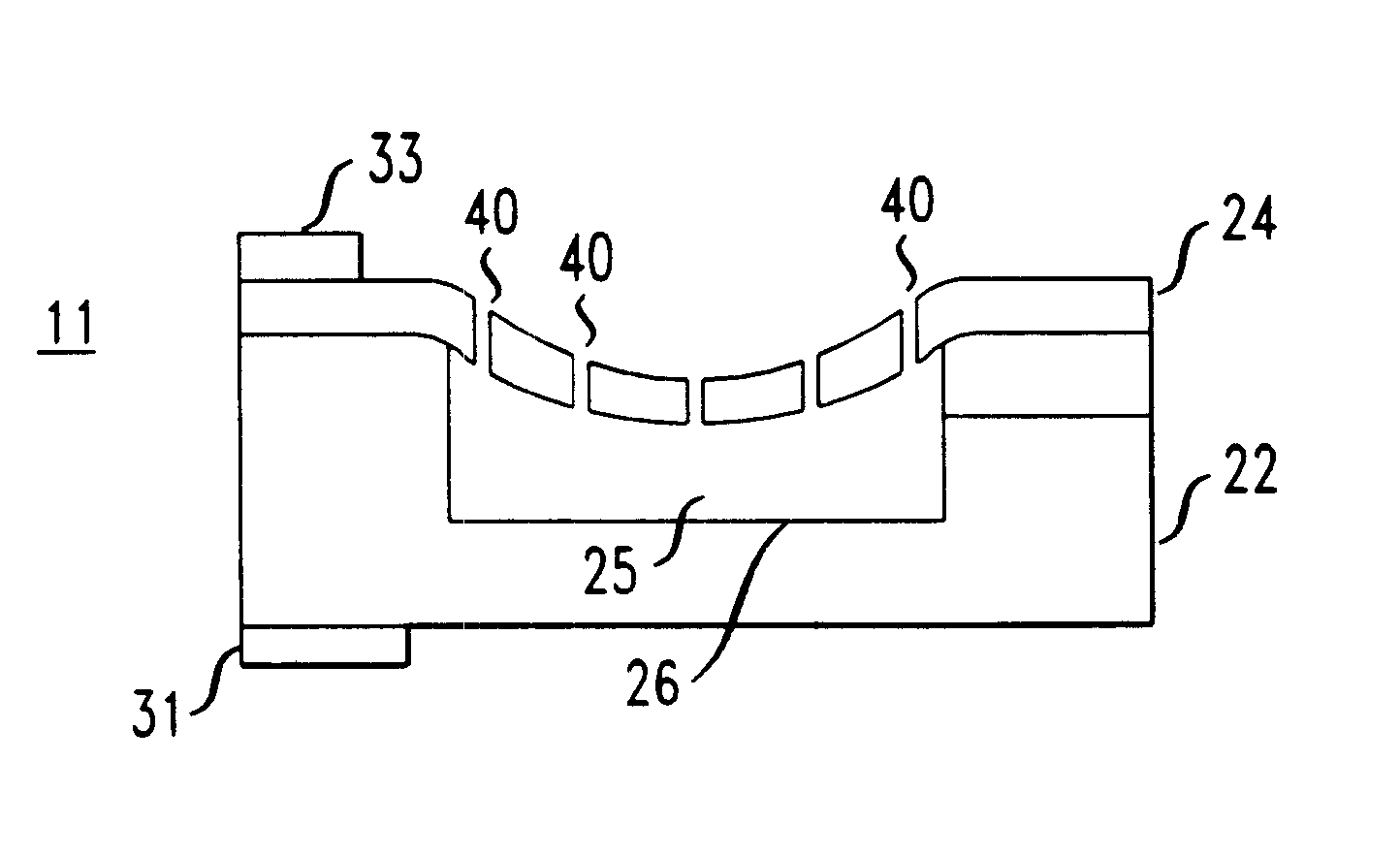Optical attenuator
an optical attenuator and optical technology, applied in the field of optical attenuators, can solve the problems of affecting the performance of optical signals
- Summary
- Abstract
- Description
- Claims
- Application Information
AI Technical Summary
Problems solved by technology
Method used
Image
Examples
Embodiment Construction
An optical attenuator having the structure depicted in FIG. 2 was simulated. The cavity was assumed to be circular with a diameter of about 1000 .mu.m. The height of the cavity was assumed to be about 5 .mu.m. The membrane covering the cavity was assumed to be a layer of silicon nitride about 0.2 .mu.m thick and covered with a thin gold layer. The silicon nitride had a tensile stress assumed to be about 50 MPa. A bias voltage of about 28 volts was assumed to be applied between the metal on the silicon nitride membrane and the bottom surface of the cavity. Calculations performed using a bias voltage of about 28 volts determined that the midpoint of the silicon nitride membrane would be depressed about 1.5 .mu.m into the cavity (about 30% of the cavity height).
The input and the output optical fibers were located about 4 mm (millimeters) away from the membrane surface and arranged so that the optical signals impinged on the membrane about 275 .mu.m away from the center point of the cav...
PUM
 Login to View More
Login to View More Abstract
Description
Claims
Application Information
 Login to View More
Login to View More - R&D
- Intellectual Property
- Life Sciences
- Materials
- Tech Scout
- Unparalleled Data Quality
- Higher Quality Content
- 60% Fewer Hallucinations
Browse by: Latest US Patents, China's latest patents, Technical Efficacy Thesaurus, Application Domain, Technology Topic, Popular Technical Reports.
© 2025 PatSnap. All rights reserved.Legal|Privacy policy|Modern Slavery Act Transparency Statement|Sitemap|About US| Contact US: help@patsnap.com



